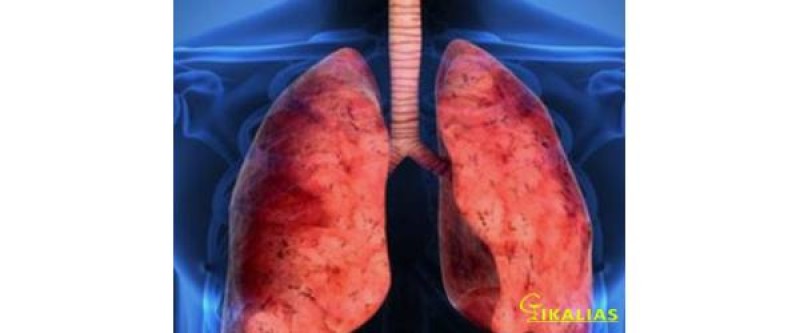Δωρεάν αποστολή για παραγγελίες άνω των 49.00€

Κυστική ίνωση: Ποια είναι τα συμπτώματα, πώς κληρονομείται
Προκαλείται από τη μετάλλαξη ενός γονιδίου του εβδόμου χρωμοσώματος και προσβάλλει πολλά ζωτικά όργανα και συστήματα του ανθρώπινου οργανισμού.
Κύριο χαρακτηριστικό της νόσου είναι η εμφάνιση ιδιαίτερα παχύρρευστων και αφυδατωμένων εκκρίσεων σε διάφορα όργανα και σε αδένες του σώματος, με αποτέλεσμα τη σταδιακή καταστροφή ζωτικών οργάνων και τελικώς την ανεπάρκεια αυτών.
Γενετική ανωμαλία
Μόλις το 1989 εντοπίσθηκε το γονίδιο που σχετίζεται με την Κυστική Ίνωση και βρέθηκε η πιο κοινή γονιδιακή ανωμαλία ή μετάλλαξη, και έχει ποσοστό εμφάνισης περίπου 70% στη Βόρεια Αμερική.
Όπως αναφέρει το cysticfibrosis.gr, στην Ελλάδα εκτιμάται ότι απαντάται σε ποσοστό μεταξύ 50% και 55%. Από τότε, ανακαλύφθηκαν σχεδόν 2000 τέτοιες μεταλλάξεις που προκαλούν Κυστική Ίνωση.
Το συγκεκριμένο γονίδιο είναι υπεύθυνο για την παραγωγή μιας πρωτεΐνης που ελέγχει τη διέλευση του χλωρίου από τις μεμβράνες των επιθηλιακών κυττάρων διαφόρων οργάνων του σώματος, όπως των πνευμόνων, του παγκρέατος, των ιδρωτοποιών αδένων και του εντέρου.
Η δυσλειτουργία του γονιδίου έχει ως συνέπεια την προβληματική παραγωγή ή λειτουργία της πρωτεΐνης, με αποτέλεσμα στα διάφορα όργανα να παράγεται από το επιθήλιο παχύρρευστη και κολλώδης βλέννα που φράσσει τους πόρους των αδένων ή των αγωγών που υπάρχουν σε αυτά.
Για παράδειγμα, στους πνεύμονες η βλέννα αποφράσσει τους αεραγωγούς, με συνέπεια συχνές μικροβιακές λοιμώξεις και ανοσολογικές αντιδράσεις που οδηγούν στην έκκριση περισσότερης βλέννας, η οποία ευνοεί με τη σειρά της την εγκατάσταση μικροβίων, δημιουργώντας έτσι ένα φαύλο κύκλο.
Στο πάγκρεας παρεμποδίζεται η παραγωγή ενζύμων απαραίτητων για την πέψη των τροφών. Οι ιδρωτοποιοί αδένες παράγουν πολύ αλμυρό ιδρώτα, γεγονός που δημιουργεί σοβαρούς κινδύνους αφυδάτωσης, αλλά ταυτόχρονα βοηθάει στην ασφαλή διάγνωση της νόσου μέσω του τεστ ιδρώτα.
Πώς κληρονομείται
Πρόκειται για μια γενετική διαταραχή –συνεπώς μη μεταδοτική– που οι ασθενείς φέρουν από τη γέννησή τους, έχοντας κληρονομήσει δύο παθολογικά γονίδια της Κυστικής Ίνωσης, ένα από τον κάθε γονέα τους.
Τα άτομα που φέρουν ένα μόνο παθολογικό γονίδιο λέγονται φορείς του γονιδίου και θεωρούνται απολύτως υγιή.
Για να γεννηθεί ένα παιδί με Κυστική Ίνωση πρέπει απαραίτητα και οι δύο γονείς του να είναι φορείς ή ασθενείς.
Συχνότητα
Εκτιμάται ότι περίπου 50-60 παιδιά το χρόνο γεννιούνται στην Ελλάδα με κυστική ίνωση. Περίπου 500.000 Έλληνες είναι φορείς.
Στην χώρα μας εκτιμάται ότι υπάρχουν πάνω από 800 ασθενείς, ενώ η συχνότερη γονιδιακή μετάλλαξη που παρατηρείται στον ελλαδικό χώρο είναι η χαρακτηριζόμενη ως f508del ή ΔF508, η οποία θεωρείται από τις βαρύτερες σε συμπτωματολογία μεταλλάξεις.
Από την άποψη της γέννησης νέων πασχόντων, η Κυστική Ίνωση είναι μακράν η πιο διαδεδομένη κληρονομική νόσος στην Ελλάδα.
Κατά εντελώς παράδοξο τρόπο, είναι μια πάθηση μάλλον άγνωστη στην κοινή γνώμη, ενώ, ακόμη και μεταξύ των ιατρών, η εικόνα για τη νόσο είναι ασαφής ή παρωχημένη.
Συμπτώματα & Επιπτώσεις
Η Κυστική Ίνωση ], προσβάλλει διάφορα όργανα του σώματος. Τα κυριότερα συμπτώματα αφορούν το αναπνευστικό σύστημα, το πεπτικό-γαστρεντερικό σύστημα και το αναπαραγωγικό σύστημα.
Υπάρχει μεγάλη ποικιλία στην εμφάνιση αλλά και τη βαρύτητα προβλημάτων στους ασθενείς. Ο κάθε ασθενής επηρεάζεται διαφορετικά.
Κρίσιμες για την πορεία των ασθενών θεωρούνται οι επιπλοκές του αναπνευστικού συστήματος που καταστρέφουν με την πάροδο του χρόνου τον πνευμονικό ιστό, έχοντας και το συντριπτικά μεγαλύτερο ποσοστό μεταξύ των αιτίων θνησιμότητας της νόσου.
Άλλα συνήθη συμπτώματα είναι ο αλμυρός ιδρώτας με σοβαρό κίνδυνο αφυδάτωσης, η παγκρεατική ανεπάρκεια και άλλα γαστρεντερικά προβλήματα.
Υπάρχουν κάποιες επιπτώσεις στο αναπαραγωγικό σύστημα στους άνδρες, ενώ σε αρκετές περιπτώσεις μπορεί να εμφανισθεί μια μορφή διαβήτη, καρδιακά προβλήματα, σοβαρά ηπατικά προβλήματα , παγκρεατίτιδα, οστεοπόρωση-οστεοπενία, ρευματοειδής αρθρίτιδα, ρινικοί πολύποδες και διάφορες άλλες επιπλοκές.
Αντιμετώπιση
Από τη στιγμή της διάγνωσης, ένας ασθενής με Κυστική Ίνωση πρέπει να παρακολουθείται από εξειδικευμένο γιατρό και να νοσηλεύεται σε εξειδικευμένο κέντρο Κυστικής Ίνωσης.
Ο καθημερινός αγώνας των ασθενών απαιτεί προσήλωση και πειθαρχία και σκοπό έχει να διατηρήσει στην καλύτερη δυνατή κατάσταση κυρίως τους πνεύμονες αλλά και τον οργανισμό τους γενικότερα, με φροντίδα και θεραπείες που κύριο στόχο έχουν την πρόληψη και αντιμετώπιση των αναπνευστικών λοιμώξεων που οδηγούν σε αναπνευστική ανεπάρκεια.
Ο ασθενής με Κυστική Ίνωση κάνει καθημερινά θωρακική φυσικοθεραπεία και παίρνει κατά περίπτωση ή και μόνιμα διάφορα φάρμακα σε εισπνεόμενη ή πόσιμη μορφή παγκρεατικά ένζυμα, βιταμίνες, συμπληρώματα διατροφής, τηρώντας ένα αυστηρό ιατρικό πρωτόκολλο φροντίδας.
Επίσης, κατά διαστήματα, απαιτούνται νοσηλείες στο νοσοκομείο, συνήθως για τη λήψη ενδοφλέβιας αγωγής.
Για ασθενείς με Κυστική Ίνωση που βρίσκονται στα τελικά στάδια αναπνευστικής ανεπάρκειας, μόνη λύση είναι η μεταμόσχευση πνευμόνων, εφόσον εγκριθεί η ένταξή τους σε λίστα και βρεθεί εγκαίρως το κατάλληλο μόσχευμα, μέσα από χρονοβόρες και πολυδάπανες διαδικασίες.
Μέχρι σήμερα μεταμοσχεύσεις πνευμόνων μπορούν να γίνουν μόνο σε Κέντρα του εξωτερικού.
Προοπτικές για το μέλλον
Οι ασθενείς με Κυστική Ίνωση και οι οικογένειές τους, όσον αφορά τις ιατρικές εξελίξεις σχετικά με τη νόσο, έχουν κάθε λόγο σήμερα να αντιμετωπίζουν το μέλλον με αισιοδοξία.
Τεράστια ποσά δαπανώνται κάθε χρόνο για τη χρηματοδότηση ερευνών για την εξεύρεση νέων θεραπειών για την Κυστική Ίνωση.
Και αν ακόμη αποδεικνυόταν αδύνατη η ριζική θεραπεία της Κυστική Ίνωσης, είναι βάσιμη η ελπίδα, με την πρόοδο της Ιατρικής, ότι θα μετατραπεί βαθμιαία η πάθηση από μια θανατηφόρο –ή έστω περιοριστική της ζωής– ασθένεια σε μια απλή ενόχληση για τους πάσχοντες.
Πηγή: organiclife.gr














